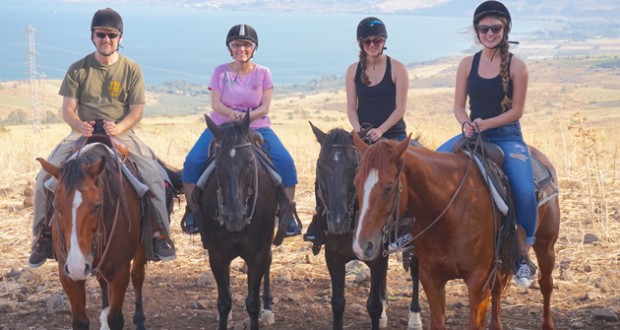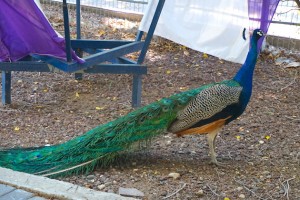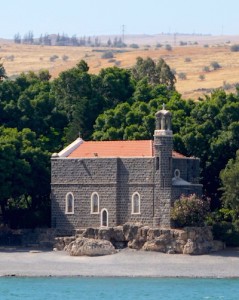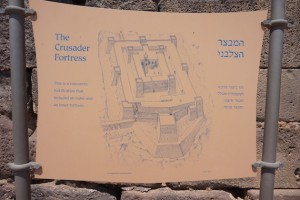In the Footsteps of Jesus.
Nazareth

This is the wine press discovered not he grounds of the Nazareth Medical Center. It dates from Jesus’ day and is most likely the actual wine press used when Jesus lived in Nazareth. Photo: Dwight Widaman
Leaving the Mediterranean coast the next morning, we headed inland toward Jesus’ boyhood hometown. Two millennia ago, Nazareth was a poor farming community of 400 Jews. Today it has 80,000 residents with 30 percent identifying as Arab Christians, with the rest Muslims.
In 1996, a First Century wine press buried beneath thousands of years of rubble was discovered on the local hospital’s property. Mark 12 talks about a watchtower, vat and wine press. This was the farm of ancient Nazareth and it was more than a parable!
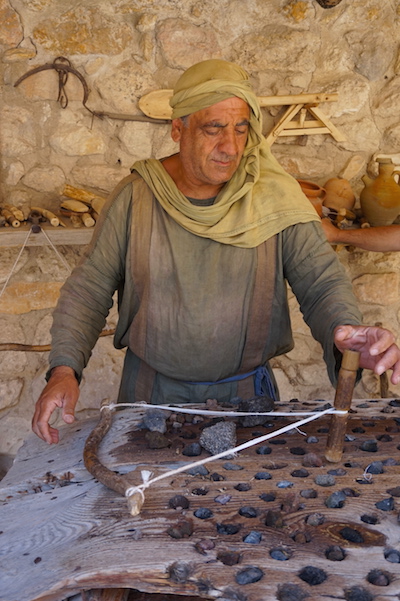
A Nazareth Village worker demonstrates how a threshing machine is constructed. Rocks are hammered into wet wood. When the wood dries it contracts leaving the rocks securely in place. The contraption was then pulled behind a donkey to separate the grain from the chaff. Nazareth Village is a “hands on” living history museum that allows visitors to try their hand at woodworking and more. Photo: Anita Widaman
Archeologists realized that the small village of Jesus’ day would have had just one wine press and here it was giving away the location of ancient Nazareth’s terraced vineyards and gardens. Painstakingly unearthed, visitors can walk on the terraces that produced the food that Jesus ate and touch the very wine press. The site also offers demonstrations of the work and home life at the time of Christ.
Before leaving Nazareth, visitors should see the Basilica of the Annunciation, just off the town square. It’s on the site where tradition says Gabriel visited Mary.
Leaving the Basilica, we discovered that a little free time can provide serendipitous diversion. While waiting for Zvika to pick us up, Hannah spotted a formal eveningwear dressmaker’s shop. The modern gowns were a unique contrast to the rough garments we just saw on the actors at Nazareth Village. Anita and the girls cruised the racks of gorgeous dresses while the prices at the home appliance and tool store next door provided amusement for me.
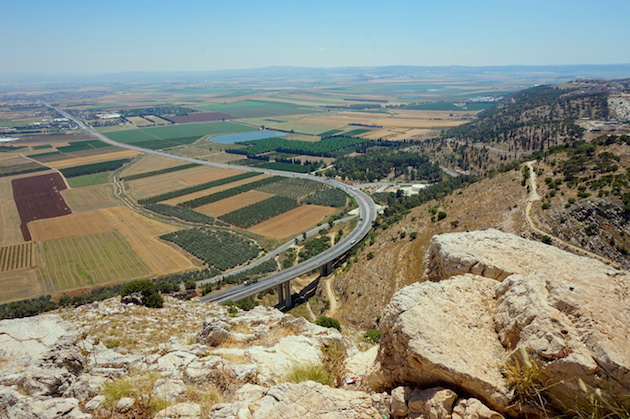
Mount of Precipice overlooks the Jezreel Valley. Israel’s modern farming technology has made it a world leader in water conservation and agriculture. It annually donates hundreds of millions of gallons of water to its Arab neighbor, Jordan. Photo: Dwight Widaman
On the outskirts of Nazareth, we stopped at the Mount of Precipice where, from its steep vantage point, we saw Mount Tabor—the site where Deborah and Barak (Judges 4) defeated a Canaanite chariot army that had gotten bogged down in the mud. It is also the beginning of the “Jesus Trail” from Nazareth to Capernaum. From our vantage point the view of the Jezreel Valley below is breathtaking. Whether visitors have a farming background like Anita or not, the view gives an appreciation of what Israel has done in turning what was once hard-scrabble farm life into the world’s most productive farmland. Below, reservoirs glimmer in the sun all the way to the horizon, preventing rainwater from flowing into the sea.
Israel has developed and perfected much of the water-saving techniques used from California and Kansas to sub-Saharan Africa. Since the 1994 peace treaty with Jordan, Israel has freely given the technology and expertise to its Arab neighbor, which has an even greater water shortage. In fact, Israel is so efficient in its water use, it now sends millions of gallons of water to Jordan to help the Hashemite kingdom expand its farming and become less dependent on food imports, thus helping to stabilize the country.
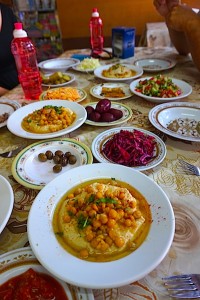
This is fast-food, Israeli style! Farm to table vegetables and fruits along with your favorite hummus and falafel shared family style means lunches are casual and built around conversatation.
Moshe’s explanation of farms and food made us hungry since it was well after our regular lunchtime. We stopped in the small town of Afula for a famous “Golani” Falafel–by far Israel’s most popular fast food.
By then, it was late afternoon and, having prepared by bringing swim trunks and suits, we headed to Hamat Gader Park. This thermal mineral spring has attracted visitors since Roman times, and even earlier when the area was part of Manasseh—one of the Twelve Tribes. The park has something for every age—parrot show, waterslide, mineral pools and baths, petting zoo and alligators. Don’t worry, though, the reptiles are not found in the mineral pool of water!
The Golan Heights
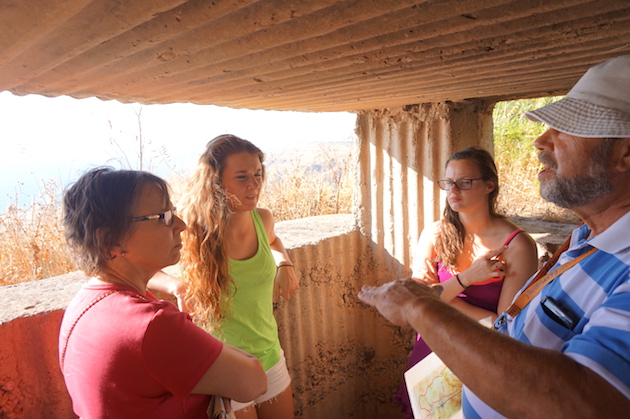
Our official Israeli tour guide, Moshe Henzel, explains the importance of The Golan Heights to Israel’s security. Won from Syria after the 1967 war, Israel has developed into sustainable farming what Syria once used to bombard the Israeli villages along the Sea of Galilee. Now the region boasts resorts, family fun parks, winter snow skiing and more. Photo: Dwight Widaman
Nearby we took a curvy highway up, up and up (they don’t call it the Golan Heights for nothin’) to Kibbutz Kfar Haruv. From our vantage point at 1,722 feet, we had a spectacular view of the Sea of Galilee below.
We hiked further down the short trail to an abandoned Syrian bunker just below the peak of the mountain. Peering out the gun-ports, we could easily see the proximity of fishing boats, farms, houses and schools on the edge of the lake and it was a sober reality of the importance of the Golan Heights to Israel’s security. Amazingly, there is now a movement afoot to force Israel to return the Golan to Syria, which the Arab nation lost in the 1967 Six-Day War.
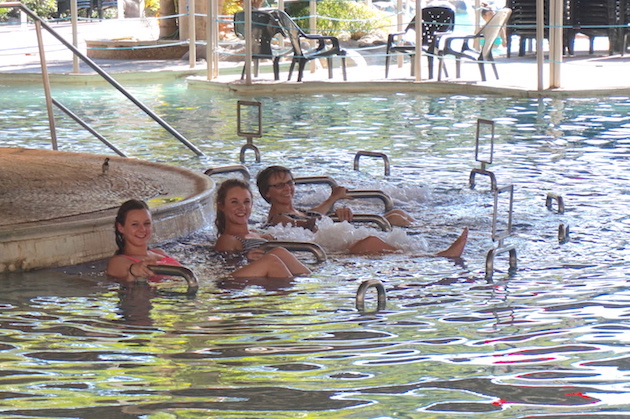
Hamer Gader resort is the home of hot springs that were also popular in Roman times. Here, Anita, Emma and Hannah relax in the soothing mineral steam pool.
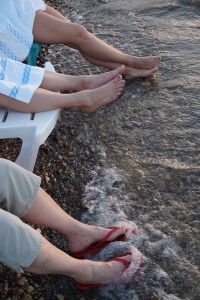
After a day of site-seeing, we went to the Galilee’s beach at the resort kibbutz and let the cool waters sooth our feet as the lights of cities twinkled on the hillsides in the distance.
Our day complete and the sun sinking across the western shores of the Galilee, we drove a short distance along the southern shore to Kibbutz Ma’agan. Although the original industry of kibbutzim was agriculture, several like this one, have added tourism and even resort amenities. Kids were happily swimming in
the first-class pool, though our family was content placing our beach chairs at the edge of the Galilee as the cool water lapped at our feet. As dusk arrived, our room’s view allowed us to enjoy the twinkling lights of Tiberius, as well as those of many settlements in the hillsides above.
Northern Galilee
Waking to the love call of peacocks that roamed outside our kibbutz door, we readied ourselves for a busy day trip on the Jesus Trail, a 40-mile route in the Galilee region that connects places where Jesus ministered. We drove north around the Sea to the Mount of Beatitudes, where Jesus delivered the Sermon on the Mount (Matthew 5–7).
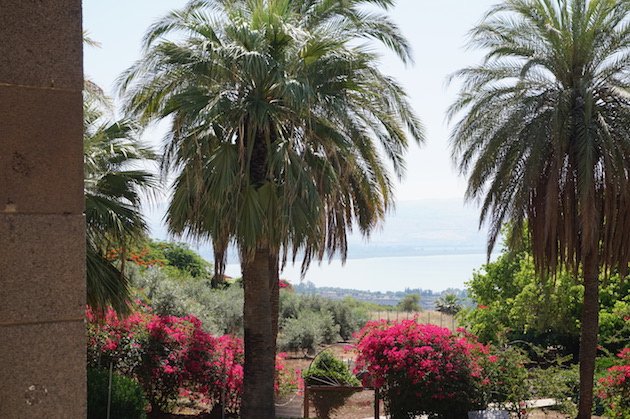
The beautiful grounds of the Church of the Beatitudes reflects the simplicity of Jesus’ sermon on the mount which would have taken place nearby. Photo: Anita Widaman
After a short self-guided tour, we found a shady corner of the garden. By this point, like on any long family trip, some nerves had begun to fray. From my pocket I took out a tiny Bible and we read the Beatitudes. Jesus’ words in Matthew 5:5, 9 seemed to bounce off the cobblestone walk, “Blessed are the meek, for they will inherit the earth…Blessed are the peacemakers for they will be called children of God.” Like most believers, we’ve each read those verses hundreds of times, yet speaking them where Jesus spoke brought them to life—and just when our family needed to hear them.
Down the hill from the Mount (many make the hike) but within view, is the Church of the Primacy of St. Peter—a black basalt structure on the edge of the Sea of Galilee. This is where, after Christ’s resurrection, Jesus appeared to his disciples and asked Peter, “Do you love me?” (Matt. 16:18) The simple structure and quiet gardens provided a cool respite on a warm morning.
Capernaum
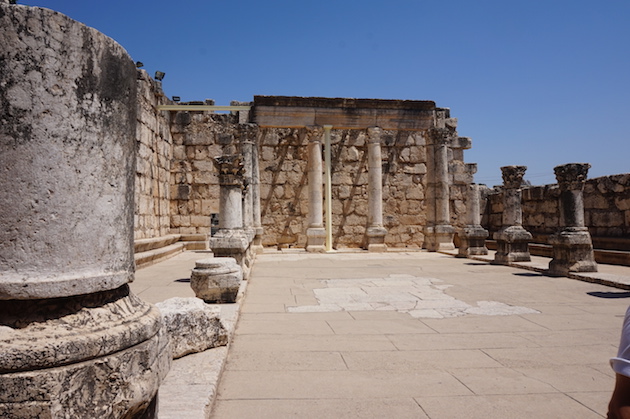
This Third Century synagogue is built on the foundations of the First Century structure Jesus taught in. Nearby has been discovered the remains of Peter’s house. Photo: Dwight Widaman
Nearby, we visited the important town of Capernaum, which Jesus made his base of ministry for three years and where he called Simon Peter, Andrew, James and John to be His disciples. This large, crowded, and prosperous community witnessed, more than any other, many of Christ’s miracles. Here, in the synagogue, Jesus cast out many demons, including one that declared “…Thou art the Holy One of God.” It’s also the city where Simon’s mother-in-law was instantly healed; Jairus’ dead daughter was raised; the disciples experienced the miracle of the fish; plus so many healings that Mark 1:29-34 records that all the sick of Capernaum came to Simon’s house and were healed by Jesus. Not just the sick but “all the city was gathered together at the door.”
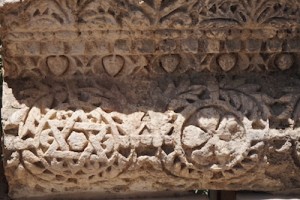
The first known use of the Star of David as a Jewish symbol was discovered here in Caperanum. Photo: Anita Widaman
It is also where archeologists have unearthed, and scholars have confirmed, Peter’s actual house. A first century statement carved into the stonewalls of the house simply states, “This is Peter’s House.”
Is it any wonder that Jesus, nearing the height of his ministry, would make Peter’s house so famous—even rock star famous—that a passionate young follower, perhaps Emma’s or Hannah’s age, would carve those immortal words into a wall where it all happened? The house, and the ruins of a 3rd century church built around it, are both easily visible through the glass floor of spaceship-like church built over it.
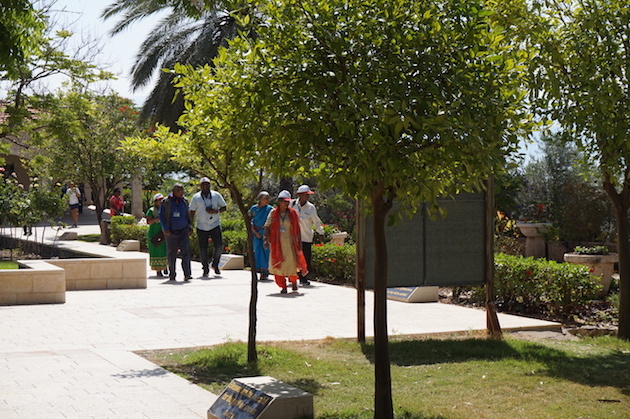
No matter where you travel in Israel, Christians from around the world. You’ll run into them at various points in your trip as your itineraries coincide eliciting smiles of acknowledgment. Photo: Hannah Widaman
A short walk away, as the Bible recounts, the foundation of the Capernaum synagogue where Jesus taught can be seen beneath ruins of a 3rd century synagogue. The fallen columns and carved stones are chiseled with native fruits, seven-branched menorah (its first recorded use as a symbol of Judaism), the biblical Ark of the Covenant, and other Jewish designs—all from the most miraculous time in history!
That Capernaum residents saw such great miracles yet many still chose not to believe is startling, even to today’s young people who often demand concrete evidence. Jesus provided a warning and foretold of its great destruction (Matt. 11:21-24).
The “Jesus Boat”

The “Jesus Boat” was given that name by tourists. It is the oldest known fishing boat ever recovered from the Sea of Galilee and carbon dating puts its origin in the First Century. Photo: Anita Widaman
Several of Jesus’ miracles dealt with fish and water. He calmed the sea, multiplied the fish more than once and he declared he would make Simon (and each of His followers) a “fisher of men.” So fishing boats naturally played a large cultural role here.
At Kibbutz Ginosar, the Yigal Alon Center houses a state-of-the art museum whose prized possession is a wooden fishing boat carbon-dated from the 1st century. It was discovered by two local fishermen after a severe drought dropped the level of the Galilee and the ancient boat’s wooden timbers were exposed. The only ancient Galilean boat ever discovered, it was carefully preserved and visitors now call it the “Jesus Boat.”
The center attracts Muslim, Christian and Jewish Israeli youth who build relationships and are instilled with moral and democratic values.
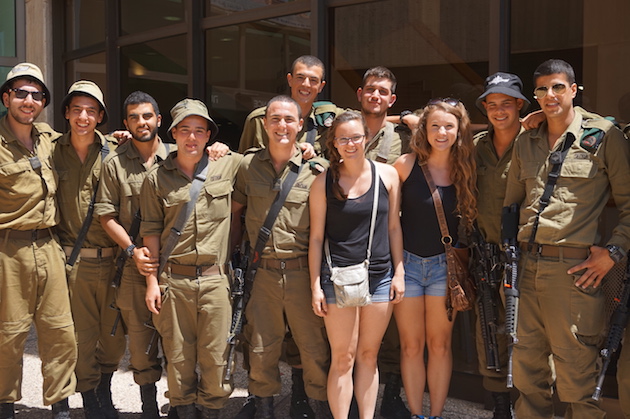
Most all young Israeli men and women serve in the Israeli Defense Forces, or IDF. Here Hannah and Emma did not miss this opportunity for a photo with the lads and the soldiers were only too happy to comply. Photo: Dwight Widaman
It was also an opportunity for Hannah and Emma to see young people their age serving in the Israeli Defense Forces. According to Moshe almost all Israeli men serve between 18 and 32 months while women serve between 12 and 24 months. While touring the Center a unit was waiting for its next assignment, so our girls seized the moment and asked for a picture with the soldiers.
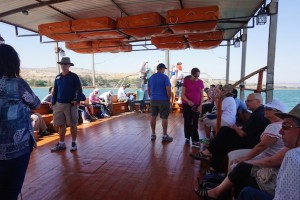
Saying on the Sea of Galilee allows for a perspective of the typography of the land that really has not changed from what Jesus saw on the boat with the disciples. The cruise is a great way to get your bearings on what you’ve seen during your drive around the Sea and sit and talk with other tourists.
Despite the impromptu photo session, we were impressed by the serious attitude Israeli young people have toward protecting their homeland. Even our daughters noted it is not a quality they that they would attribute to most of their American peers.
After touring the center and seeing the boat up-close, we set sail on one of several outings available on the Sea of Galilee. It helped me actualize the slow pace of life in Jesus’ day. It was also moving to realize that the outlines of the hills and other geography are essentially unchanged from what Jesus saw from His boat.
The Wild West?
By Anita Widaman
The Galilee on Horseback
As our escort Zvika started driving toward our next destination, his mobile phone sounded. Dwight and I chuckled, recognizing the ringtone —the theme of Clint Eastwood’s “The Good, the Bad and the Ugly.” It was totally fitting, as we were about to experience Israel on horseback!
The media never misses creating scary headlines involving the Holy Land. In contrast to those headlines, it was uncanny how at ease we felt during our entire visit. However, the scariest part (for me) came on horseback! The Vered HaGalill Ranch, created in 1961 by a Chicago Jew, is home to a lovely restaurant, hotel and riding school. It was a test of faith to mount the horse and follow the trail among the many rocks spit out eons ago by a nearby volcano. Up and down the rolling and often rocky hills above the Sea of Galilee we went. In the distance were visible backdrops of flourishing crops and orchards. Only in Israel!
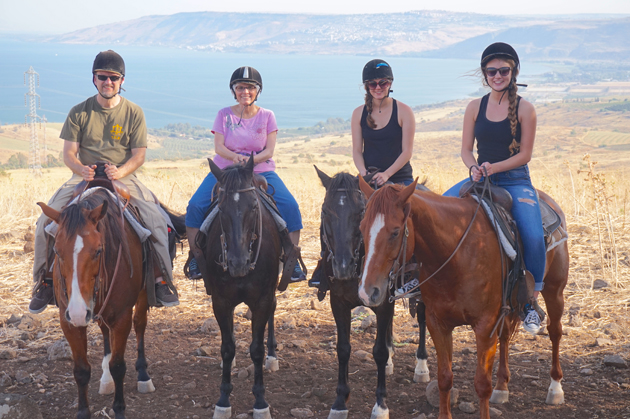
Dwight, Anita, Hannah and Emma during a horseback exploration of the hills surrounding the Sea of Galilee. When planning trips that include young people, schedule in the great outdoors. If traveling in the winter months, you can hit the beach in the morning and go snow skiing in the afternoon. Only in Israel!
While Dwight and the girls seemed fearless—tugging at the reigns to direct their horses here and there—I just decided that my horse knew best so I relaxed, and let the majestic animal navigate our course. Though not on the typical Israel tour, the experience is a soulful way to end a busy day or to see a sunset in the Galilean hills.
In the parking lot we smiled, noticing “suburban moms” in minivans drive up with their children for after-school equestrian classes. The normality of life here is a stark contrast to the frustrating media coverage this country receives. Even Emma recounted that the Israel she was seeing with her own eyes was not the one she sees on the news. This was the true Israel!
Road to Jerusalem
By Dwight Widaman
After a second night at Kibbutz Ma’agen, we left the Galilee headed south to Jerusalem, but not before visiting a baptismal site.

There are several baptismal sites in Israel–all popular with tourists and pilgrims. Kibbutz Kinneret hosts 600,000 visitors a year at the Yardenit site. Even if you have already been baptized, the experience of being in the River Jordan is one you will always treasure. Dwight was baptized in the river in 2007 and has the t-shirt to prove it! Photo: Emma Widaman
There are various baptismal sites along the Jordan River in both Israel and Jordan. Kibbutz Kinneret hosts 600,000 visitors a year at the Yardenit site on the river as it flows out of the Sea of Galilee. Qasr el-Yahud, also on the Jordan River and near Jericho, is another popular venue. Both locations are peaceful and reverent, with believers from around the world singing and praying. It’s an inspiring place to watch followers practice their faith. Moshe shared that a terminally ill 13-year-old boy was even carried into the water on a stretcher—a trip made possible by the Make-A-Wish-Foundation.
Visiting here is a good reminder for teens and young adults that not every follower of Christ worships the same way. Indians like to jump in the river totally clothed, while Brazilians sing and dance. Next to them may be Russians, Chinese, South Koreans and Africans being baptized.
Crusader Fortress Hard to Erase
Like the crusader fortress in Acre, Belvoir Castle is a relic from the long historic tug-of-war between the crusaders and Muslims over
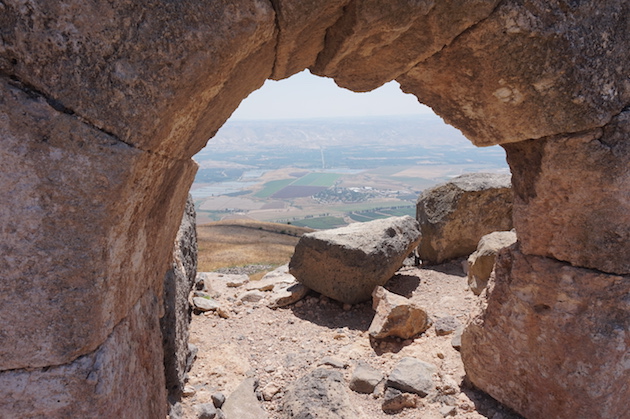
Belvoir Castle is an impressive Crusader structure straddling the top of a mountain. It was the last Crusader fortress to be abandoned but the Muslim conquerers found it too massive to completely destroy. Photo: Hannah Widaman
the Holy Land. Built by the Hospitallers in 1173, Belvoir means “beautiful view,” and that’s an apt description of what we saw looking out over the Jordan River Valley. Although Muslim leader Saladin thwarted the last crusader campaign in 1187, Belvoir did not yield. After an 18-month siege, the holdouts struck a deal with Saladin and were given safe passage to Tyre. In 1220, the Muslims attempted to dismantle Belvior, fearing another crusade, but it was too massive to destroy.
The triumph of any trip abroad is to meet people from your hometown. At Belvoir, a couple complimented our escort’s driving skills while navigating the switchback road up the mountain. It turns out they had lived in Kansas City not many years ago.
The Grandeur of Rome in Israel

Best She’an is one of Israel’s most prized Roman cities. Today you can explore its many streets and ruins which are sure to impress! The Cardo, or “main street” would have been filled with thousands of people in Jesus’ day. Photo: Dwight Widaman
We didn’t completely explore Belvoir, as we wanted extra time at Israel’s most famous Roman city and a favorite stop for any tour—Beit She’an. As recorded in the Old Testament, the city is where the bodies of Saul and his sons were hung after the defeat at Mount Galboa. During Roman times, it became one of the 10 Decapolis
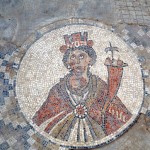
You can still go into the shops and amphitheater and see the mosaic tiles on the floor indicating what the shop keeper sold.
cities (located on the eastern frontier of the Roman Empire) and its importance and prosperity are seen in the Roman theater that seated 7,000 to 10,000 people, as well as its heated bath houses, majestic colonnaded streets, and mosaics that can still be seen on the floors of the shops and public buildings that lined the cardo or main thoroughfare of the city. It
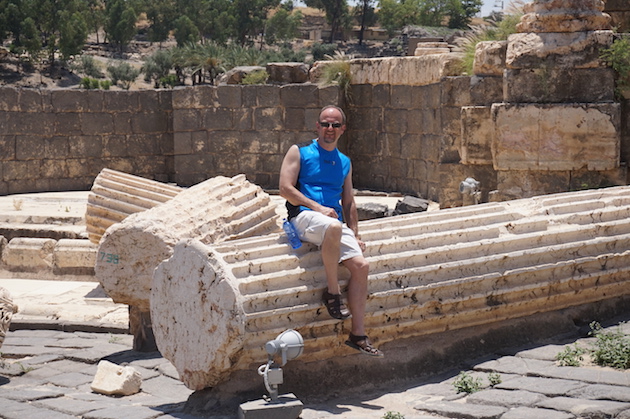
The earthquake that leveled the city, toppled these massive columns. They rest today exactly where they fell and are a good place for you to rest. Photo: Emma Widaman
was destroyed by an earthquake in the eighth century. After being buried for a thousand years, the city’s unearthing was a prize for archeologists and historians, and rivals any Roman ruin in Rome.
[Editor’s Note: Don’t miss our other stories in this series on family travel to Israel.]––By Dwight and Anita Widaman
 Metro Voice News Celebrating Faith, Family & Community
Metro Voice News Celebrating Faith, Family & Community

